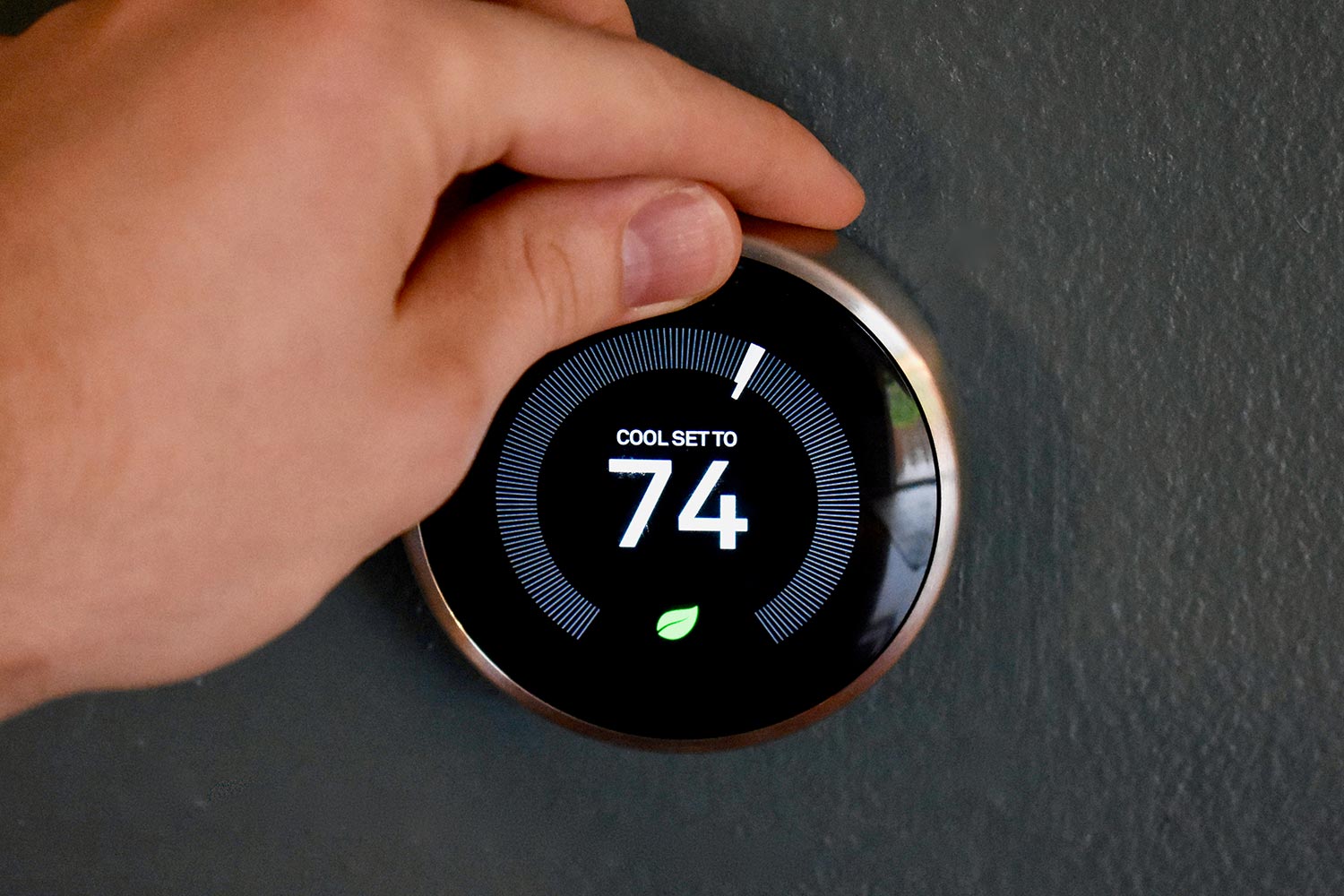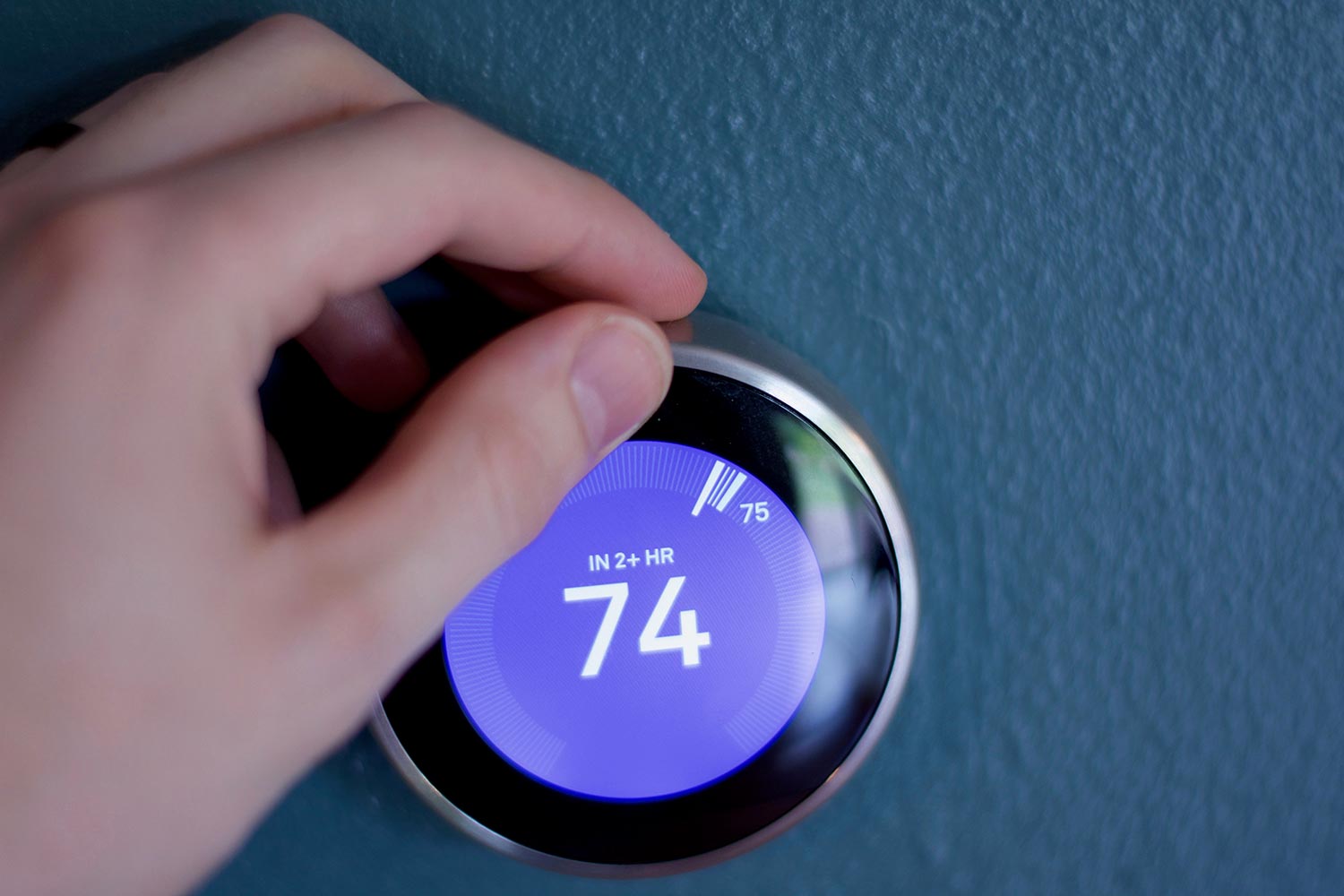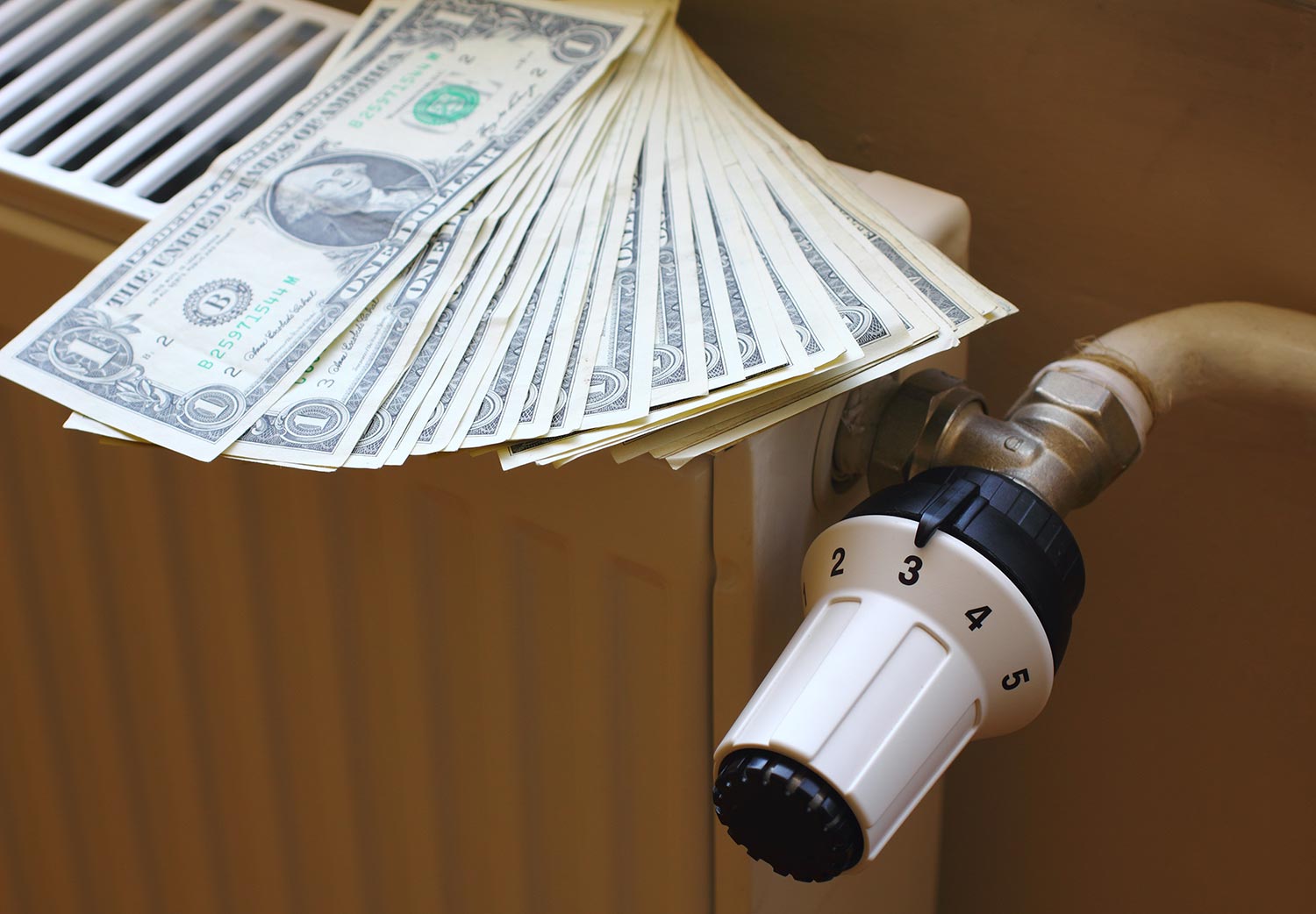The Nest thermostat is an Energy Star-recognized temperature-regulating device. It helps bring comfortable temperatures to homes using a machine learning algorithm. Now you’re also wondering if the Nest thermostat has an emergency heat function. We researched and consulted with different experts to give you this answer.
The first step to activating the emergency heat on a Nest thermostat is to find out if the device has this feature. If it’s available, follow these steps to turn on this backup heating system:
- Connect a compatible smartphone to the Nest thermostat. Download the Nest Home app if you haven’t yet.
- In the app, choose 'Thermostat' then 'Emergency Heat.'
- Confirm the command and the emergency heat system should initiate.
Take note that the steps to turn on the emergency heat are different for the Nest Learning thermostat. Keep reading as we talk about the emergency heat activation process for both the Nest and Nest Learning thermostats. We'll also discuss backup heating systems in greater detail.

Is Auxiliary Heat The Same As Emergency Heat?
Both auxiliary and emergency heat provide backup heating in case the main warming element fails or malfunctions. The difference is that auxiliary heat often activates automatically, whereas emergency heat requires a user to turn on the feature manually. Moreover, auxiliary heat generally turns on automatically if the heating system detects a quick drop in indoor temperature.
What Happens When You Turn Your Thermostat To Emergency Heat?
Turning on a thermostat’s setting to emergency heat allows the heating system to use a separate backup warming unit to help bring a comfortable temperature in a space. Homeowners should only use the emergency heating feature if:
- The outside temperature falls below 35 degrees Fahrenheit, and
- The heat pump fails to provide comfy and warm temperatures in the house
Using the emergency heat haphazardly can result in steep utility bills. Read more about when to use emergency heat by reading our post on that subject matter.
How Do You Use Emergency Heat On Nest?

Before you can use emergency heat on a Nest thermostat, ensure that the temperature-controlling fixture has this feature. You can find out if the particular Nest thermostat model you own can activate emergency heat if it has:
- A button or switch with 'Emergency’' written on it.
- A clear indication in the owner’s guide or manual.
- A wire attached to a connector labeled 'E.'
At this point, you can contact the manufacturer to check if your Nest thermostat can initiate its emergency heat operations. Once found, you can use the Nest app to help you with the installation and setup. It should also show the correct connections and wires to use to avoid errors.
Additionally, forcing the activation of the emergency heating function on a Nest without checking the thermostat’s compatibility with the home’s heating system may lead to the overheating of the space and the main warming unit.
After finishing the setup for the emergency heat, and taking note of the precautions, continue following these steps to turn on this feature:
Step-by-Step Guide
- Log in with the connected smartphone to the Nest Home app.
- Choose 'Thermostat,' then tap 'Emergency Heat.' If you can’t find the 'Thermostat' menu on the app, search for it in 'Settings.'
- Tap the screen to turn the backup heating system on or off.
Another method is to go to the 'Settings' menu on the main thermostat unit. Then, select 'Emergency Heat.' The display should ask if you want to continue with the operation. Press 'Yes' to turn on the emergency heat or 'No' to return to the previous menu.
Check out this Nest thermostat on Amazon.
How To Turn On Emergency Heat On Nest Learning thermostat?

Activating the emergency heat on a Nest Learning thermostat has slightly different steps than turning on this feature on the base Nest Thermostat unit. The steps to initiate this feature on the Learning model are:
- Open the Quick View menu by pressing the thermostat ring.
- Select 'Settings,' then choose 'Equipment.'
- Press 'Continue' until you find the command that says 'Emer. Heat.'
- Choose the 'Emer. Heat' option to turn it on.
If you want to turn off the emergency heat on a Nest Learning thermostat, select the 'Thermostat' option in the Quick View menu. Choose 'Turn Off' afterward, and the backup heating element shout shut down.
Check out the Nest Learning thermostat on Amazon.
What Does The Nest Thermostat Do?

Aside from adjusting the indoor temperature and activating emergency heat, the Nest thermostat holds other useful features for its users. Some features aren’t immediately visible but can still be practical options to the right household or individual.
Here’s a look at some beneficial features in a Nest thermostat:
Change the Thermostat Schedule
Users can set a schedule for the Nest thermostat to change indoor temperature settings based on specific dates and times. For example, you can set the Nest to affix your home’s temperature to 63 degrees Fahrenheit every Friday at 10 AM. The thermostat will automatically increase the temperature to 70 degrees Fahrenheit on Saturday at 3 PM if that’s the schedule you implemented.
You can set the thermostat schedule on your Nest thermostat by following these steps:
- Launch the Quick View circle and select 'Schedule.'
- Tap on the day and time to start setting the thermostat schedule.
- Move the slider up or down on a specific day and time to set the temperature for that specific period.
If you want to remove a particular thermostat schedule, tap the 'Remove' command at the bottom-right corner in the 'Schedule' screen. You can also watch the video below if you need additional help in using this Nest feature:
Turn On Eco Mode
The Eco Mode on a Nest thermostat can help property owners save money on their energy bills. Once activated, Eco Mode will reduce the thermostat’s power slightly but would still maintain a fairly comfortable temperature across the house.
Turn on Eco Mode on a Nest thermostat through these steps:
- Open the Quick View circle and select the 'Eco' tab.
- Choose 'Start Eco' to initiate the feature.
Generally, a Nest thermostat’s Eco Mode will reduce the set temperature by 48 degrees Fahrenheit. Some Nest models also allow users to set this feature automatically through a schedule.
At this point, you might find it interesting to learn more about this temperature-controlling unit. You can read our post on the Nest thermostat and if it works on an evaporative cooler for more information.
Why Is My Nest Not Heating My House?
Sometimes a Nest thermostat may malfunction or stop working as intended. Here are some ways to troubleshoot the issue to help you apply the correct solution:
Run Diagnostics
Nest home-heating systems typically have a built-in diagnostics tool. Access this feature by following these steps:
- Set the thermostat to 'Heat'
- Increase the temperature until the display becomes orange
- Check the air vents
- Turn the thermostat to 'Cool' mode and repeat the previous steps
Check for Visible Wire Damages
If the diagnostics tool didn't help you restore the thermostat's optimal functionality, inspect the wires for visible signs of damage. Cut or stripped wires can be dangerous and may ruin the device's serviceability.
Turn off the thermostat before proceeding with this troubleshooting process. Doing so will prevent potential hazards, such as electrocution, particularly if you’re going to touch the wires with your bare hands. However, think about wearing rubber gloves to prevent remnants of electricity from coursing through your skin and body.
After finishing those preparations, follow the rest of this troubleshooting guide:
- Remove the O/B connector wire and inspect for signs of corrosion, clips, or strips.
- If you find damage, replace the O/B connector with the same model. Otherwise, reinstall the wire to the same terminal.
- Restore power to the thermostat to see if turning the device off and on again helped reset the system.
- Test the thermostat if it can provide your home with the correct temperature settings.
Can Emergency Heat Cause A Fire?
Many emergency heat systems are reasonably safe to use but can become fire hazards if they fail. A malfunctioning backup heating unit can overheat, which can cause nearby fixtures and structures to increase in temperature. Leaving this dilemma alone can eventually lead to a house fire.
How Much Does Emergency Heat Cost?

Emergency heat typically costs double than average heat pump expenses. Therefore, if a property owner pays $63.34 on natural gas heating per month, keeping the emergency heat on for the same period may increase bill prices to approximately $126.68.
Final Words
Many Nest thermostat models have emergency heat. Nest models with this feature can use either the Nest Home app or the onboard controls to gain access and activate the backup heating system. However, homeowners should only use this feature in specific scenarios to avoid skyrocketing their utility bills.


